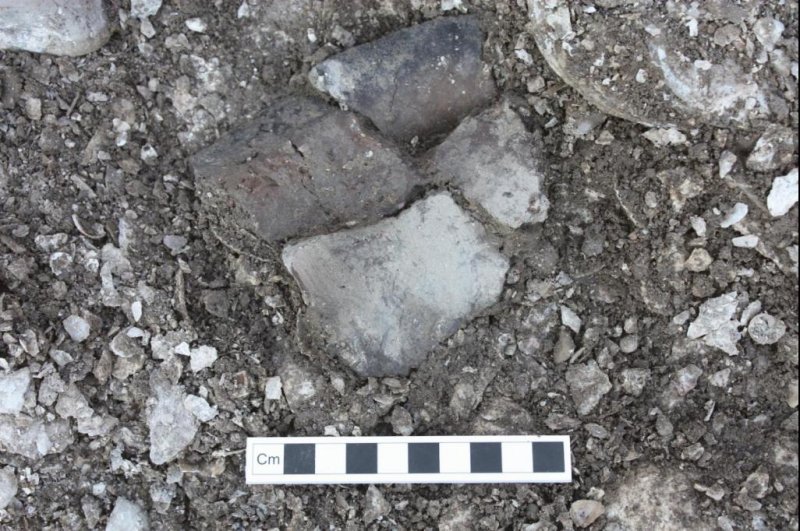Analysis of hundreds of pottery fragments from the Baltic suggests different groups of hunter-gatherers in the region developed unique culinary traditions. Photo by Harry Robson/University of York
April 22 (UPI) -- Analysis of ancient pottery fragments suggest groups of hunter gatherers living in the Baltic had developed culturally distinct cuisines between 6,000 and 7,500 years ago.
Researchers collected hundreds of fragments from pottery vessels found at 61 different archaeological sites in the Baltic region. Scientists analyzed the fragments for evidence of the purpose and contents of the ancient vessels.
Their findings -- published this week in the journal Royal Society Open Science -- suggests different groups of prehistoric humans evolved unique culinary traditions, cooking and combining foods in distinctive ways.
"People are often surprised to learn that hunter-gatherers used pottery to store, process and cook food, as carrying cumbersome ceramic vessels seems inconsistent with a nomadic lifestyle," lead study author Harry Robson, archaeologist at the University of York in Britain, said in a news release. "Our study looked at how this pottery was used and found evidence of a rich variety of foods and culinary traditions in different hunter-gatherer groups."
Scientists found little evidence of ceramic vessel use for non-food purposes, like making resin. Instead they found a diversity of culinary practices, even among groups with access to similar resources. The evidence suggests cultural practices, not variations in food availability, dictated the differences in how and what different groups cooked and ate.
"Our study suggests that culinary practices were not influenced by environmental constraints but rather were likely embedded in some long-standing culinary traditions and cultural habits," said co-author Blandine Courel, scientist at the British Museum.
Researchers found evidence that hunter-gatherers in the Baltic were taking advantage of a wide variety of foods, including marine fish, seals, beavers, wild boar, bear, deer, freshwater fish, hazelnuts and plants. Some groups were also consuming dairy.
"The presence of dairy fats in several hunter-gatherer vessels was an unexpected example of culinary 'cultural fusion,'" Robson said. "The discovery has implications for our understanding of the transition from hunter-gatherer lifestyles to early farming and demonstrates that this commodity was either exchanged or perhaps even looted from nearby farmers."
Pottery usage and the development of culinary traditions has previously been linked to the spread of agriculture across Europe, but the latest research -- made possible by improved molecular and isotopic analysis techniques -- suggests groups of hunter-gatherers had developed similar levels of culinary sophistication and diversity.
"Chemical analysis of the remains of foods and natural products prepared in pottery has already revolutionized our understanding of early agricultural societies, we are now seeing these methods being rolled out to study prehistoric hunter-gatherer pottery," said Oliver Craig, study co-author and University of York archaeologist. "The results suggest that they too had complex and culturally distinct cuisines."















